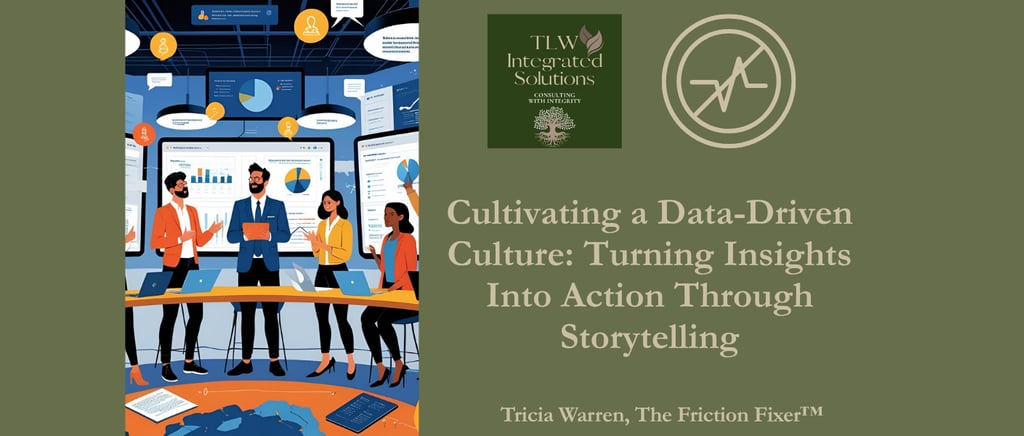Cultivating a Data-Driven Culture: Turning Insights Into Action Through Storytelling


Too often, executives find themselves swimming in detailed data reports yet struggling to translate these into clear, actionable insights. Does this form of operational friction sound familiar? In a recent engagement with a technology client, I saw firsthand how overwhelming and frustrating data overload can be for leadership teams. Their issue wasn’t the absence of data—it was an abundance of information with no context.
With endless dashboards, reports, and KPIs at their fingertips, leaders frequently feel paralyzed instead of empowered. And in today’s environment, delayed decision-making isn’t just inconvenient—it’s costly.
In fact, Gartner has reported that 87% of organizations have low business intelligence and analytics maturity, leaving them unable to use data effectively for strategic decision-making. That gap is exactly why storytelling matters.
Why Storytelling Matters
Recognizing this challenge a while back, I shifted my approach from simply presenting data to practicing data storytelling. Storytelling reframes overwhelming information into concise, compelling narratives that:
Clearly highlight strategic challenges
Provide context behind the numbers
Offer specific, actionable recommendations
Once implemented with clients, I could see the shift was immediate. Executives stopped debating spreadsheets and started making decisions. Confidence grew, decisions moved faster, and organizations became more agile and responsive.
If your organization wants to move from data paralysis to decisive action, here’s where to start:
Define Clear Narratives-Move beyond charts and tables. Frame the “so what”—the challenge, the meaning of the data, and the next step. Clarity builds confidence.
Leverage Visual Tools Strategically-Tools like Tableau, Power BI, or Looker can elevate your story, but visuals must serve the narrative—not overwhelm it. A simple, sharp visual often beats a dashboard full of noise.
Foster Continuous Dialogue-Data storytelling is not a one-way broadcast. Invite questions, test assumptions, and refine insights together. This keeps the story relevant and impactful.
Invest in Training & Literacy-Equip your teams to understand and communicate data in ways that drive decisions. Building this capability creates a culture of self-sufficiency and confidence.
Leadership’s Critical Role
If you know me, I always have a charge to Leaders. I truly believe the example is set at the top. The effectiveness of data storytelling depends heavily on leaders. If executives continue to ask for “all the data,” teams will continue to deliver volume over value. But when leaders ask, “What’s the story here?” they set a different standard.
Deloitte’s 2024 Human Capital Trends research reinforces this point: organizations where leadership champions data-driven practices see stronger engagement and more effective performance. When leaders model the behavior, storytelling moves from being a practice to being part of the culture.
At its heart, cultivating a data-driven culture is not about collecting more information—it’s about using information differently. Storytelling turns data from overwhelming to empowering. It creates clarity, drives alignment, and builds confidence.
When data becomes a story, leaders can do what they do best: decide, act, and lead with conviction.
How effectively does your organization use storytelling to make sense of data? Do your reports inspire decisions—or do they create more questions than answers? Please share your experiences —I’d love to hear what’s working and where friction still exists.
